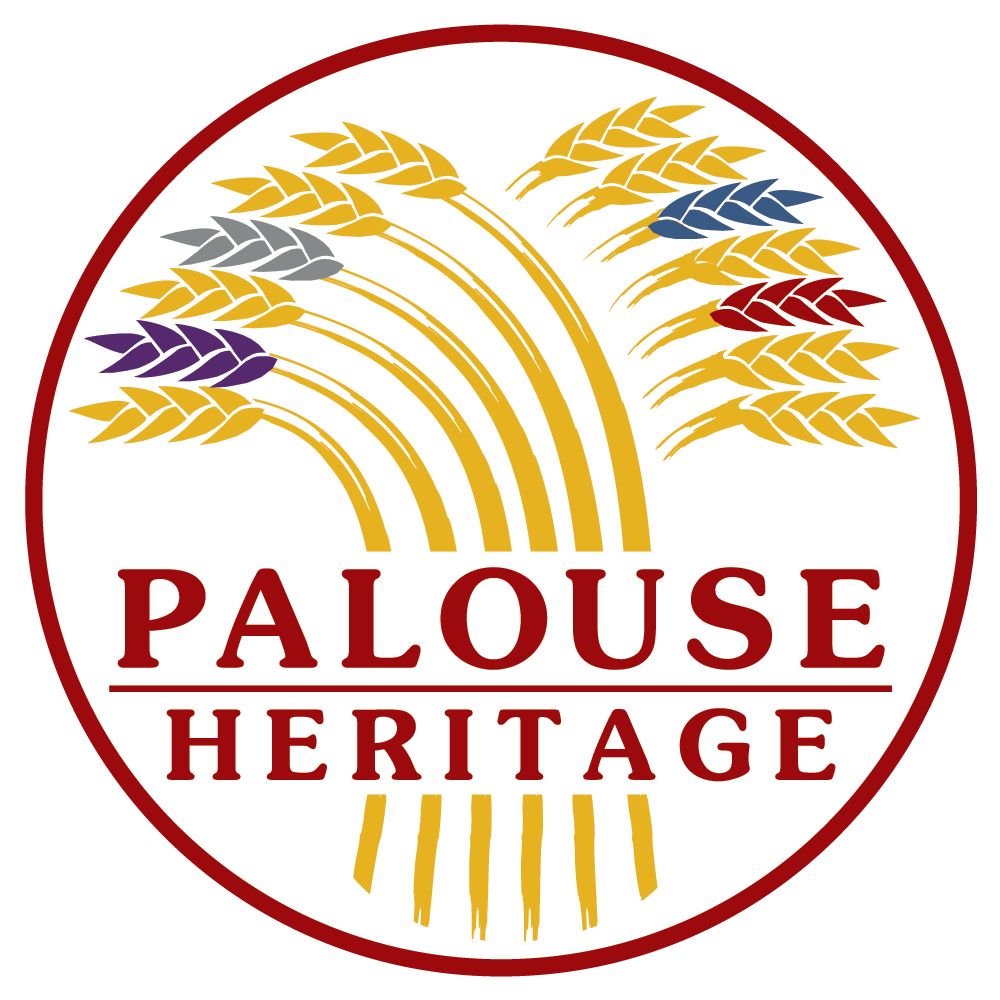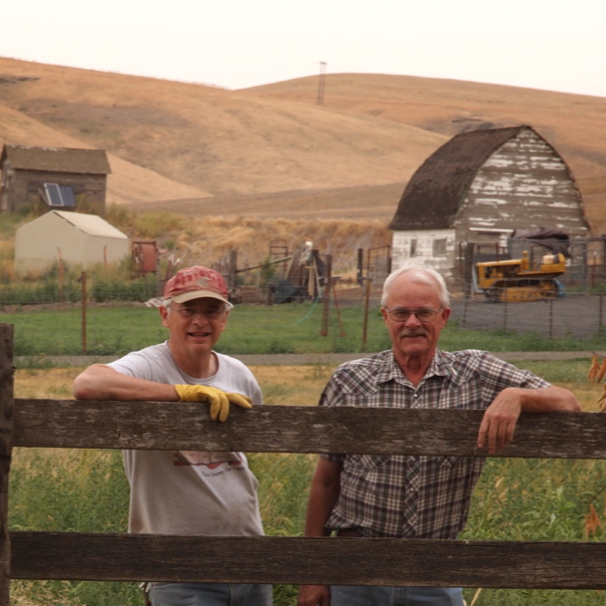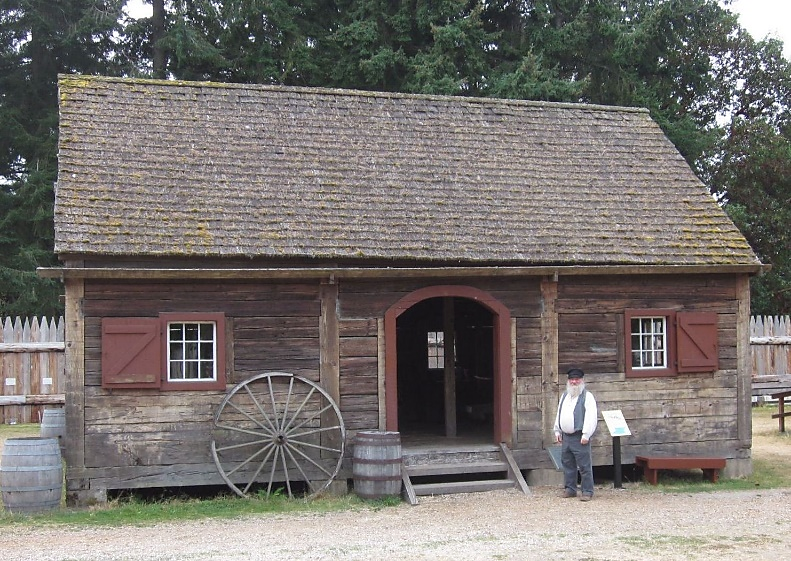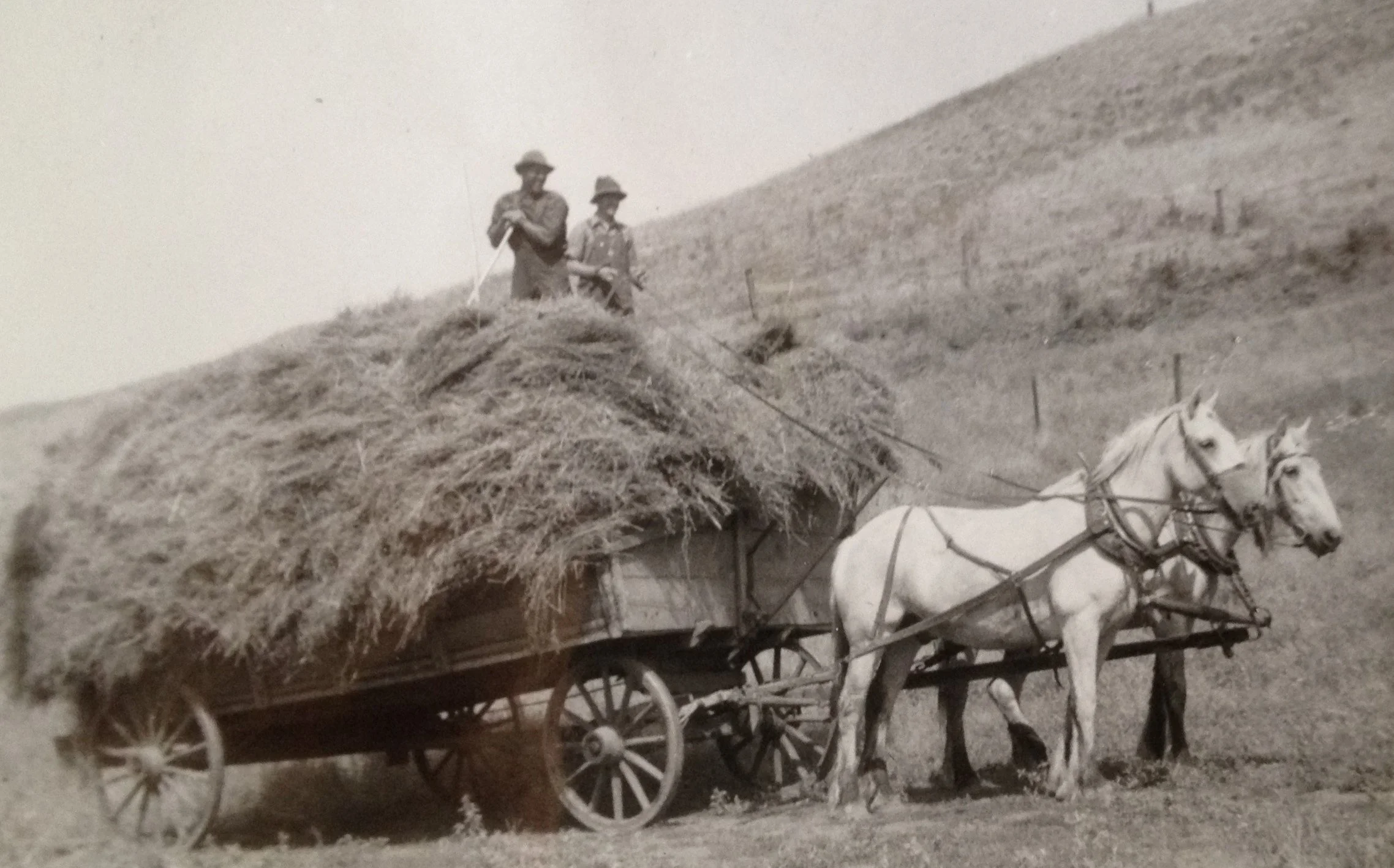
About Palouse Heritage
Our Story - The Short Version
Richard and Don Scheuerman, Co-Founders of Palouse Heritage
Palouse Heritage grows nutritious, flavorful heritage grains using regenerative farming practices that strengthen local food systems. We’re a family-owned small business rooted in the rolling hills of Washington State’s Palouse region, where our ancestors first settled in the 1880s.
Inspired by the early crops of the Pacific Northwest and supported by partnerships with research centers like the WSU Bread Lab, we founded Palouse Heritage in 2014 to revive these rare, time-honored grains. Today, we produce non-GMO, glyphosate-free, regeneratively raised grains for home bakers, brewers, and artisan food makers who care about flavor, health, and sustainability.
We raise crops at our own Palouse Colony Farm and also work closely with a trusted network of regional growers who share our commitment to regenerative practices. Together, we ensure a steady supply of exceptional and unique heritage grains, keeping them alive for the future. Every purchase supports healthy soil, vibrant communities, and food with real character!
Our Farm
Palouse Colony Farm circa 1910
Re-established in 2015, Palouse Colony Farm carries forward the legacy of our ancestors, who were German immigrant farmers from Russia. They settled the Palouse River valley in 1883 as part of the original Palouse Colony. These immigrant farming families brought with them centuries-old agrarian traditions, cultivating the land with cooperative practices and a deep respect for soil and community.
Today, as their descendants, we’ve reestablished the farm on its original site between Endicott and St. John, Washington. Here we grow our rare heritage wheats and barleys using regenerative methods that restore soil vitality, prevent erosion, and support biodiversity. Photos of the farm today are below.
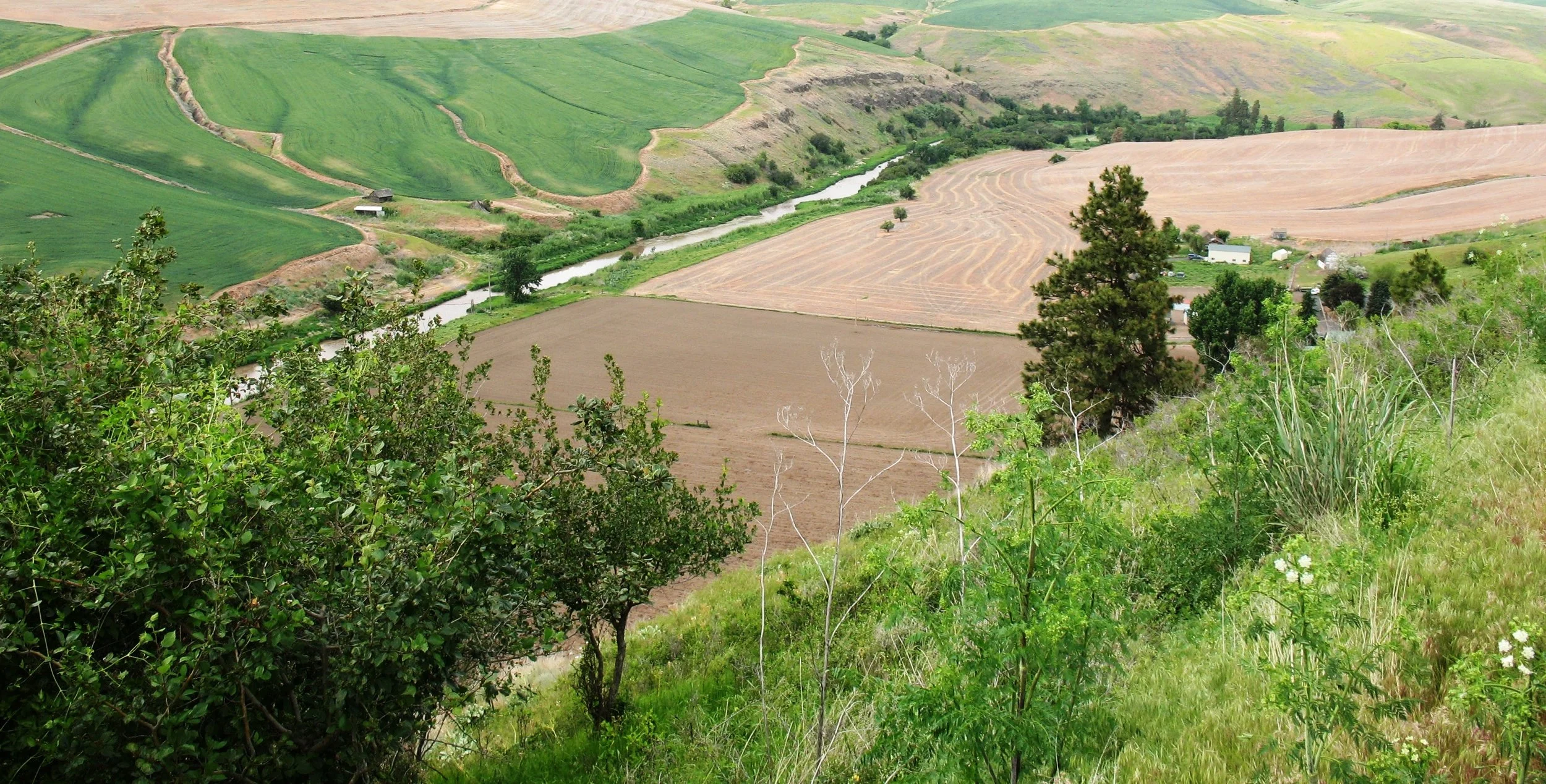
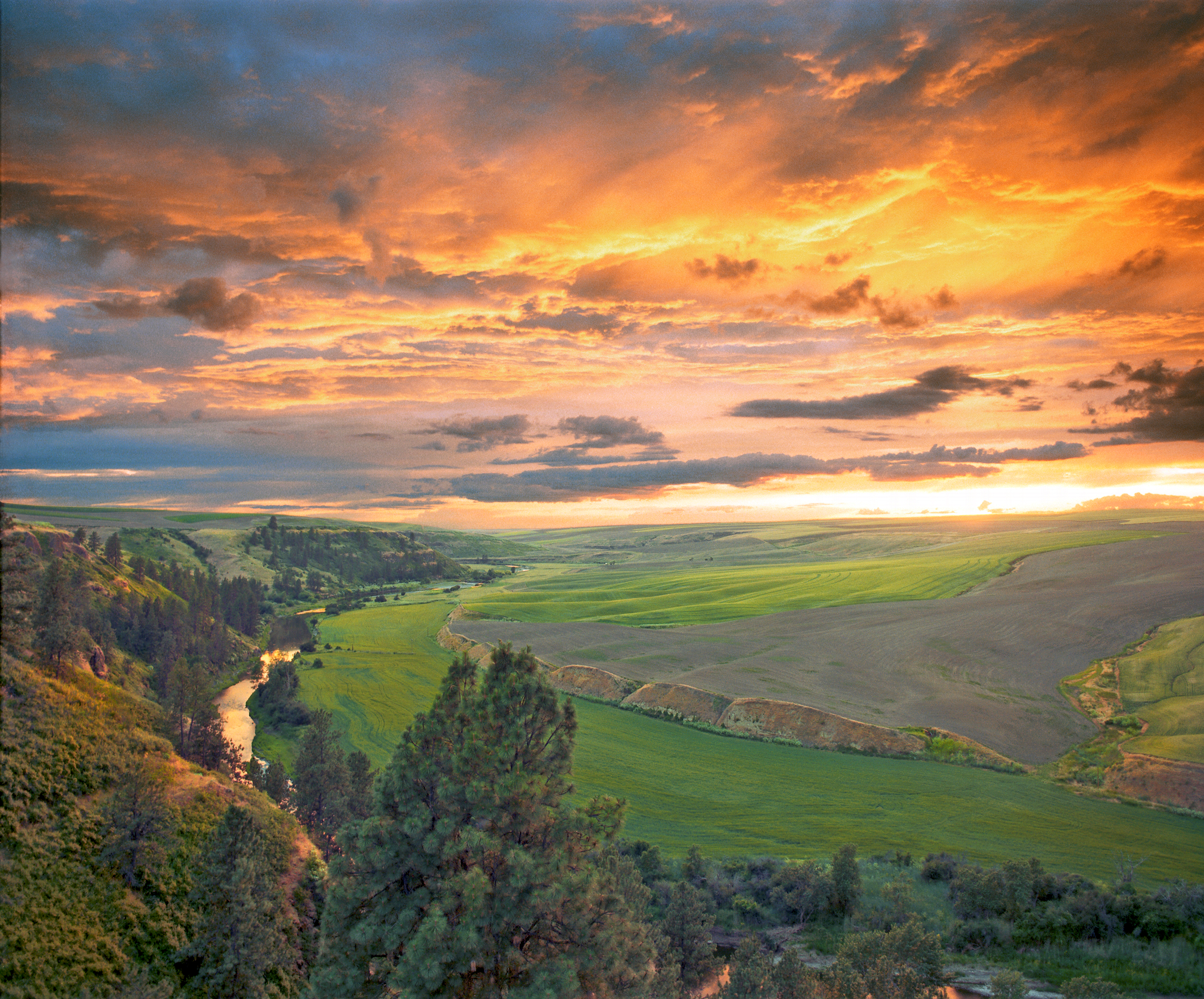
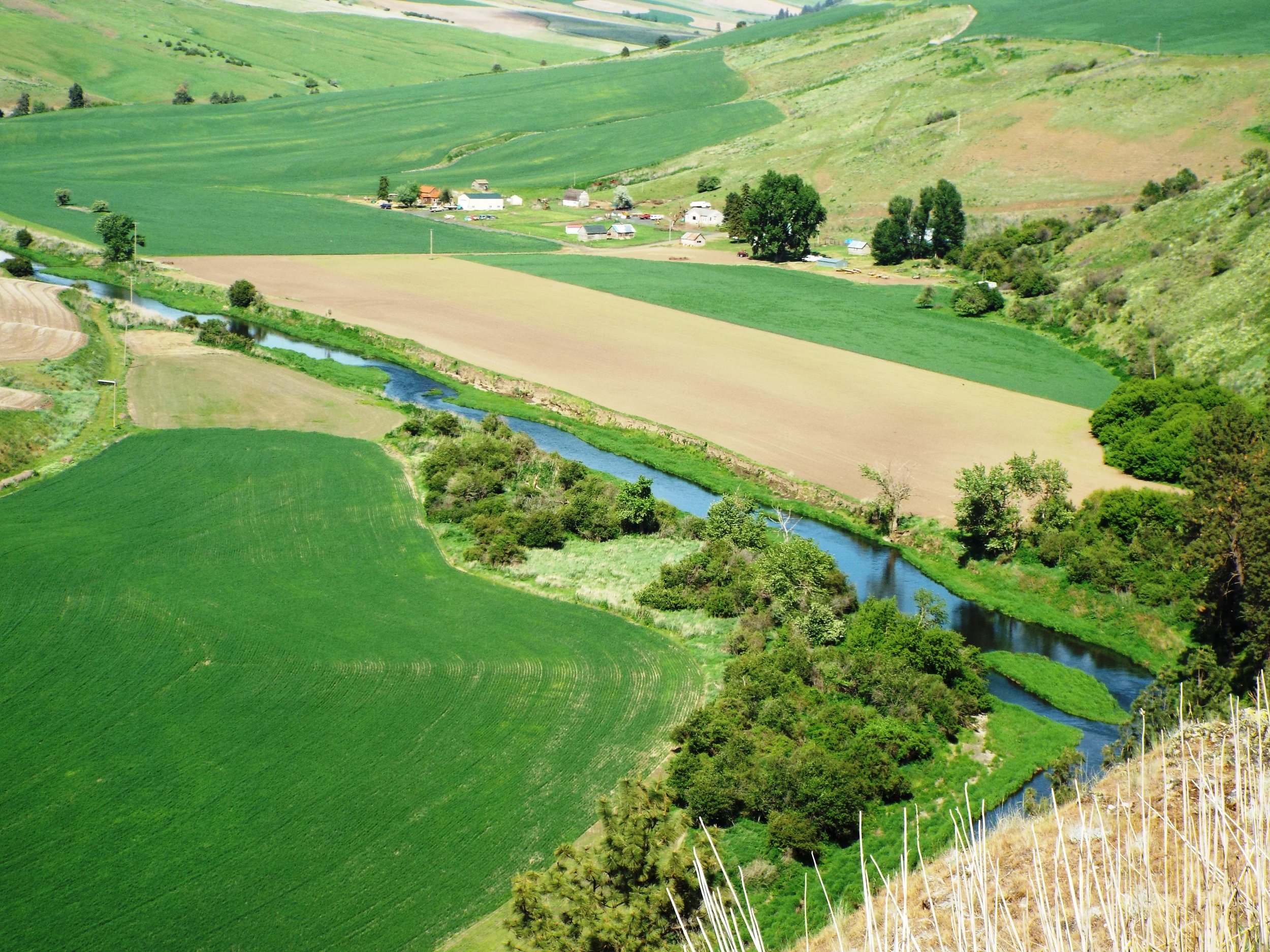



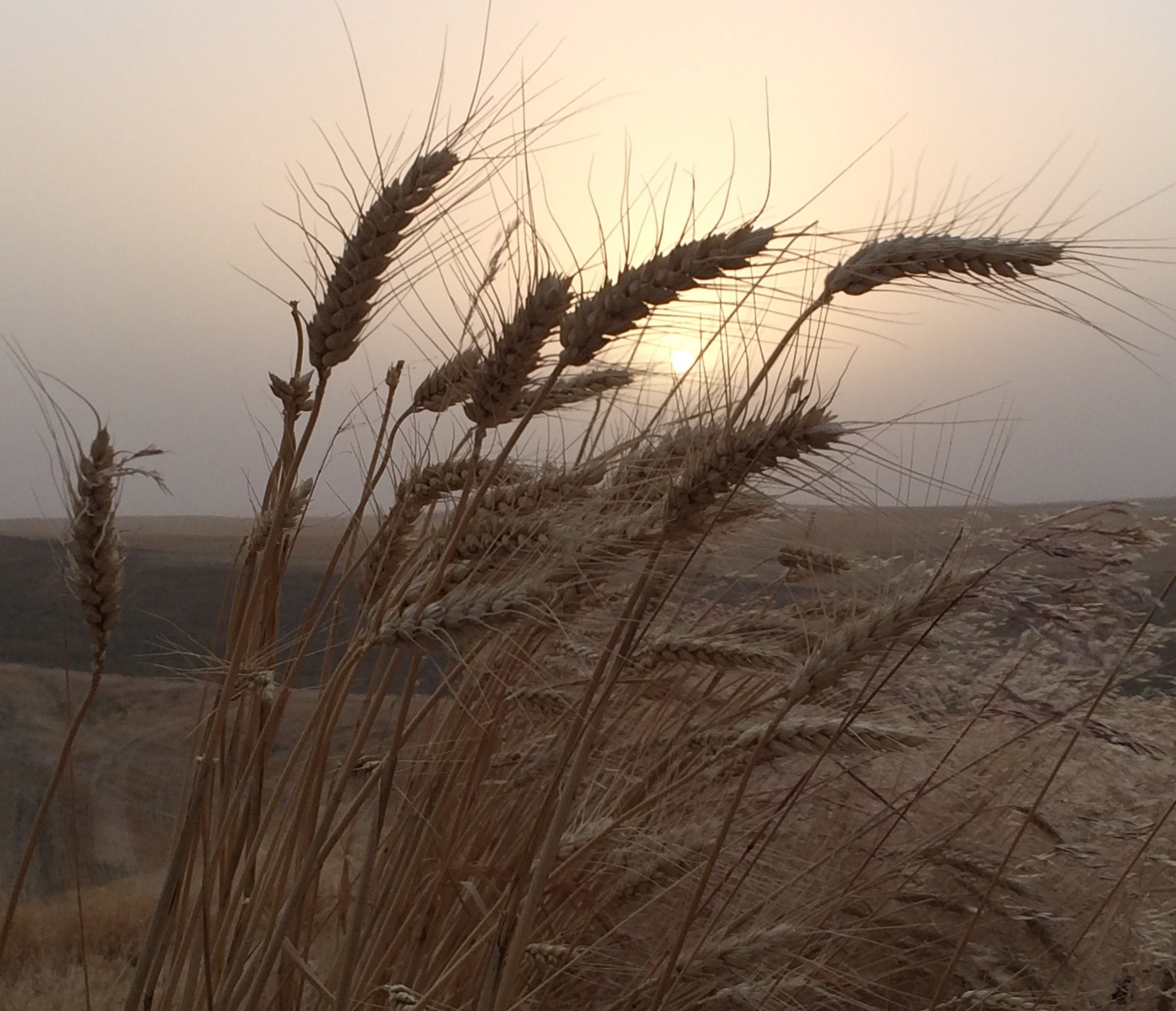
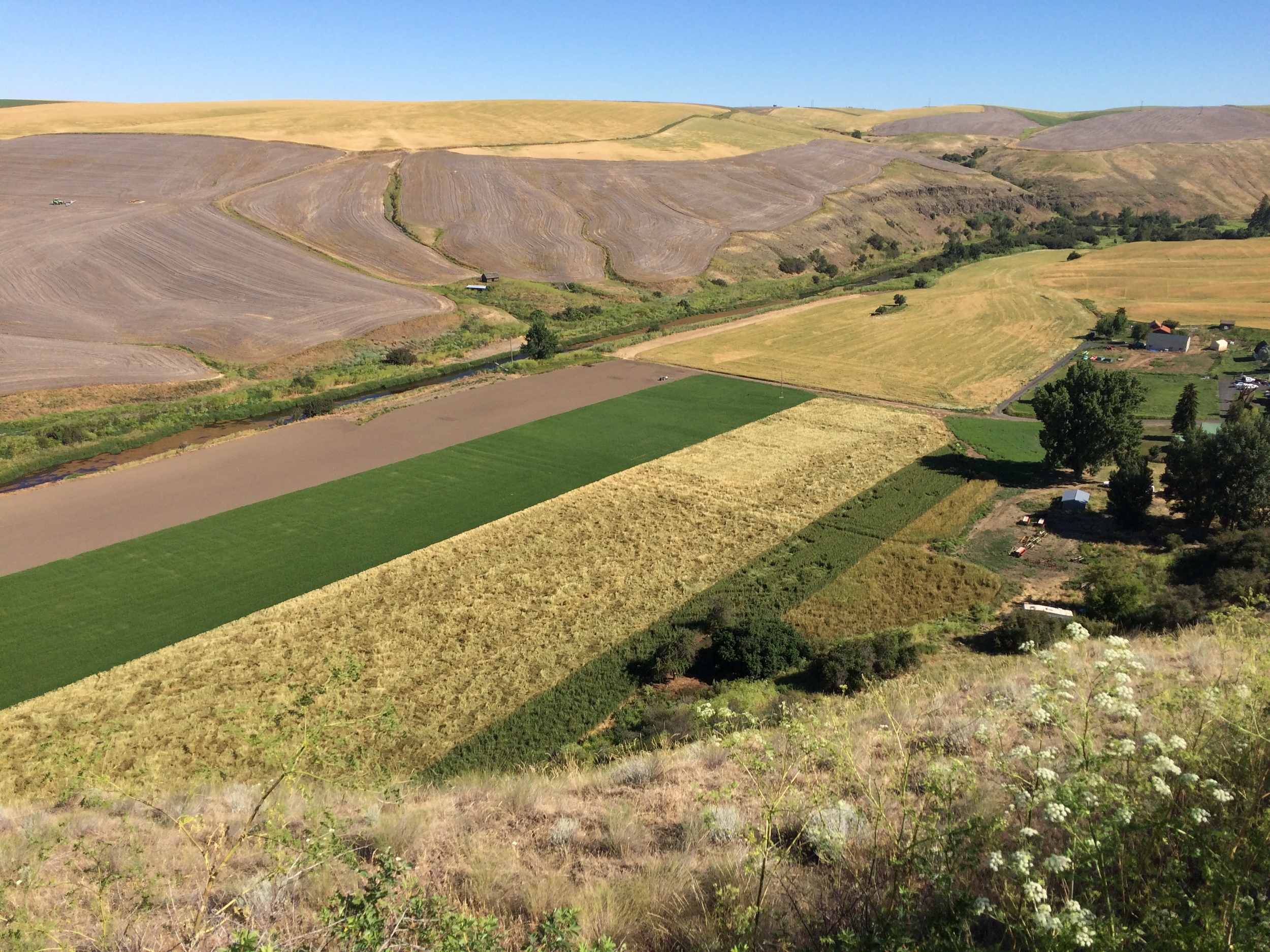

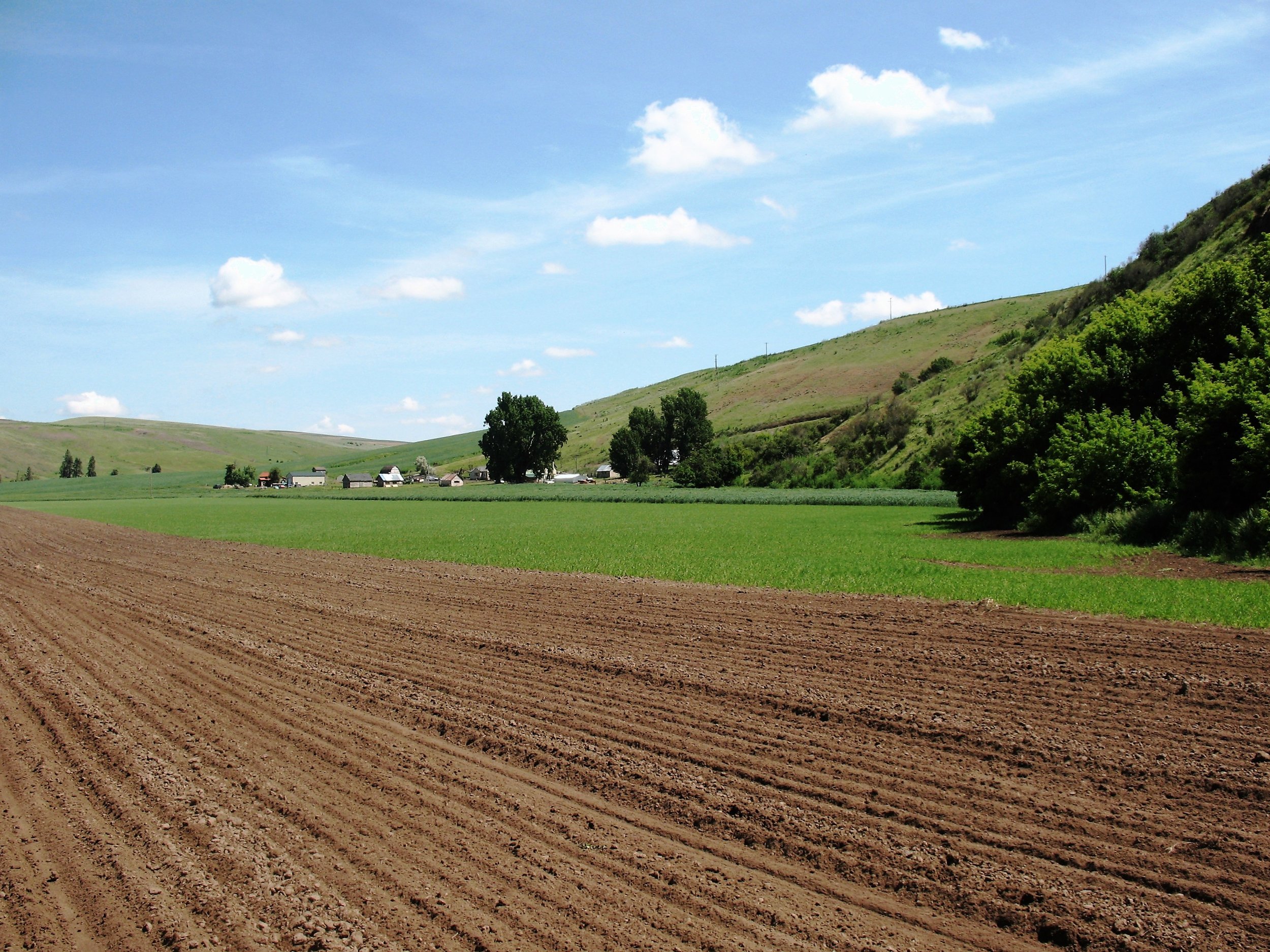
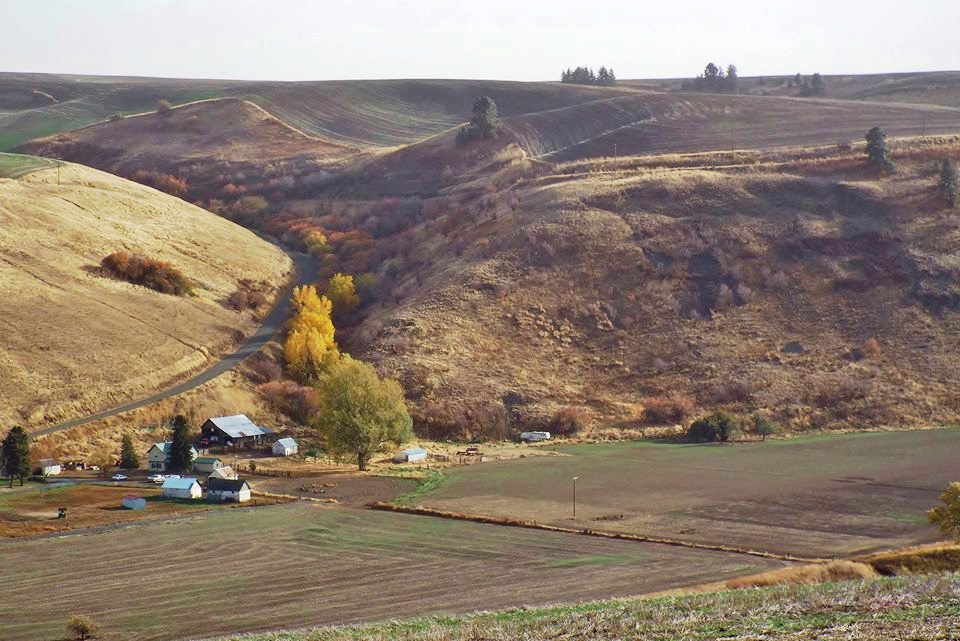
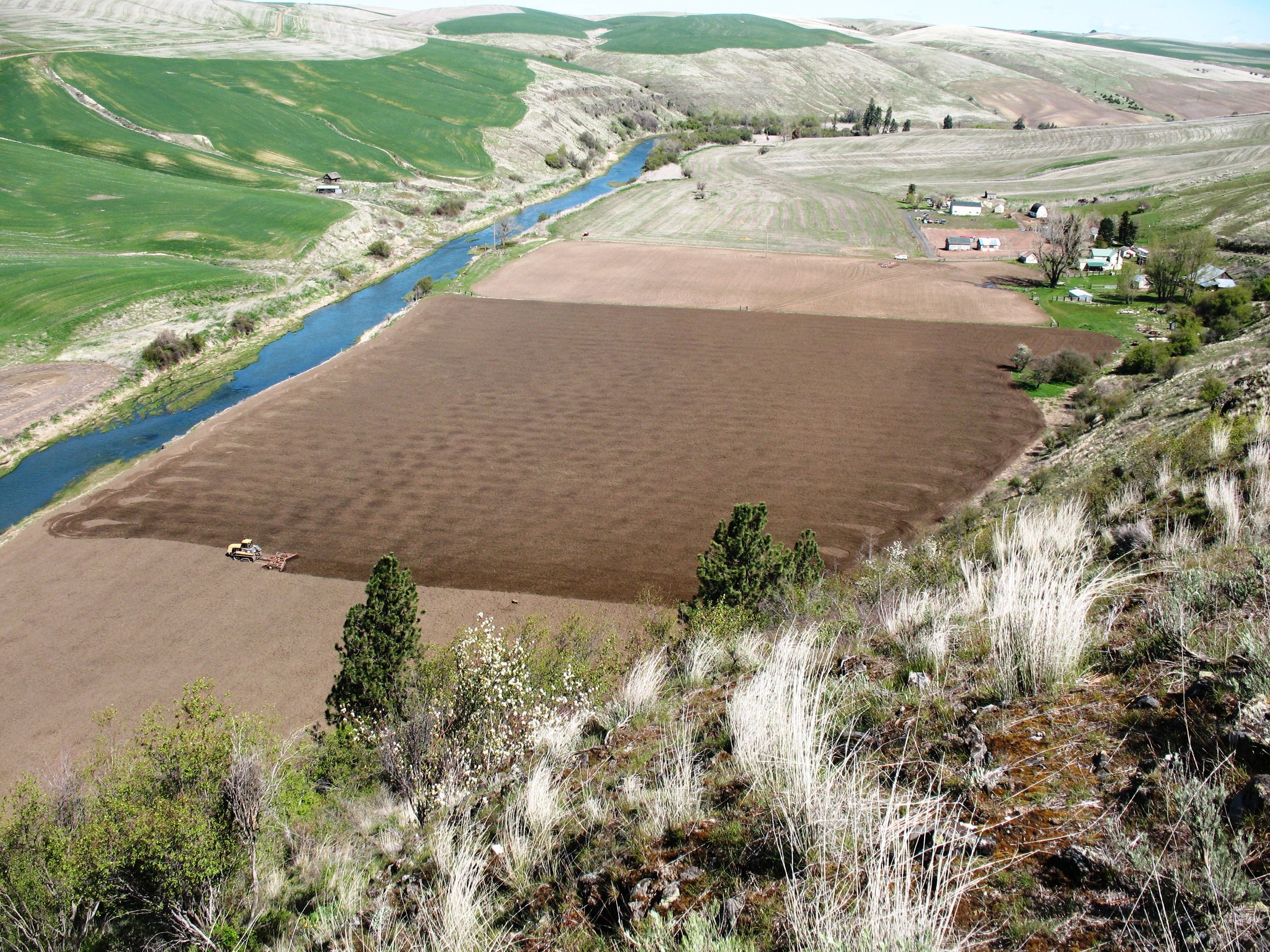
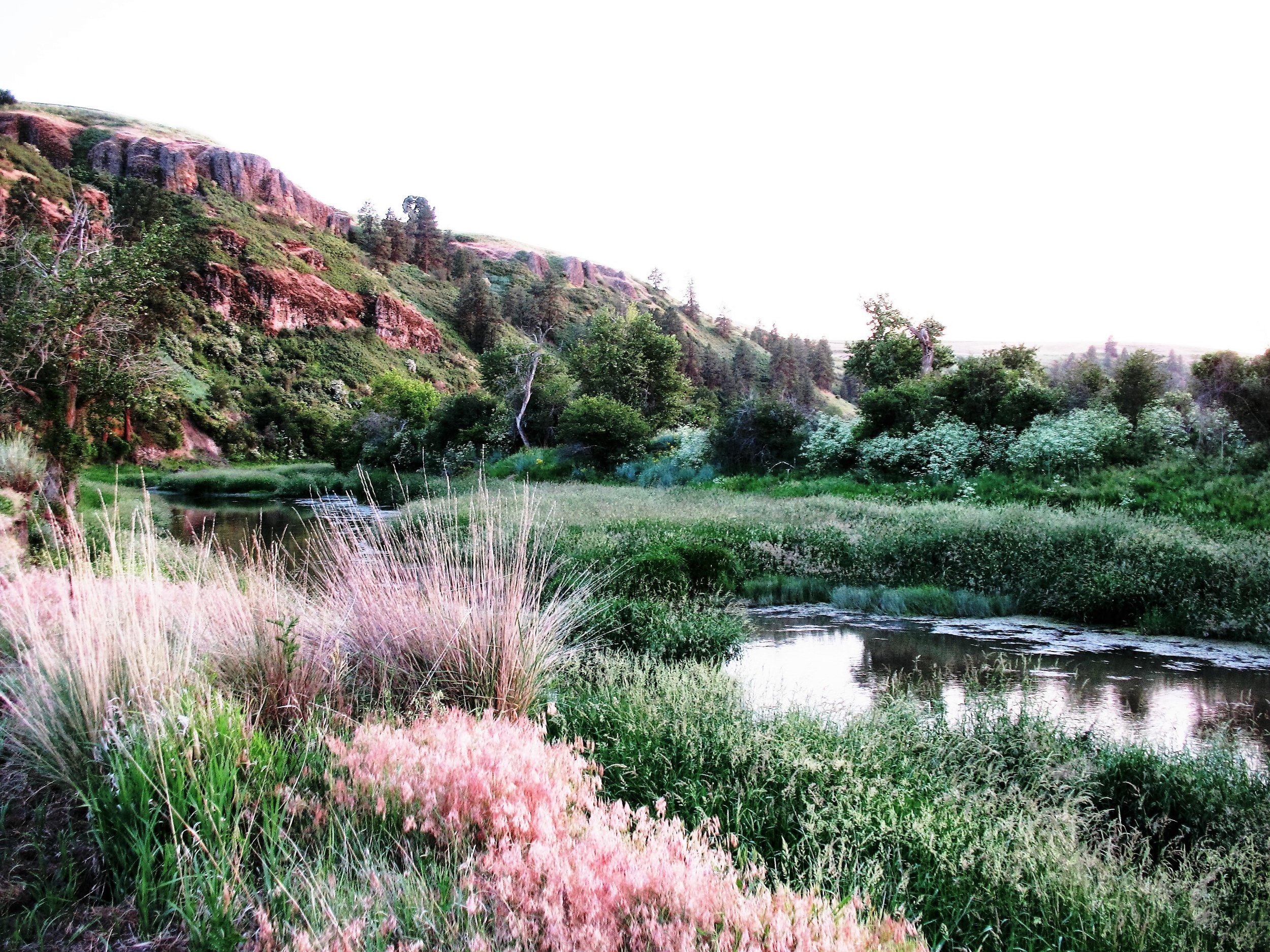



Our Growing Practices
In addition to tending our own farm, we partner with a network of like-minded growers across the Palouse who share our passion for heritage grains and regenerative agriculture. Together, we’re able to grow and share more of these remarkable varieties than we could alone. Every partner farm follows the same natural, regenerative practices we do — using crop rotations and natural soil amendments to nurture the land, our food, and the environment as summarized in the table below:
| 🌾 The Palouse Heritage Regenerative Approach | |
|---|---|
| GMO Use | 🚫 Always Non-GMO — we grow only natural, heritage varieties. |
| Glyphosate | 🚫 Never Used — no pre-harvest desiccation or chemical weed kill. |
| Insecticides | 🚫 Zero Synthetic Insecticides — we protect biodiversity, not harm it. |
| Fertilizers | 🌿 No Synthetic Fertilizers — we build fertility through natural fertilizers and crop rotations. |
| Soil & Water | 💧 Restorative — practices protect waterways and restore healthy soils. |
| Core Philosophy | ❤️ Health for People and the Environment — honoring the land and its living systems. |
Our Logo
The Palouse Heritage logo showcases our focus on the colorful and fascinating diversity of heritage grains. We are passionate about the variety of their flavors and the remarkable nutritional benefits they provide. The logo also pays homage to our locale as the stalks of wheat within the sheaf bend in a manner representing the distinctive rolling hills of the Palouse Country.
The Palouse
Heartland of the Inland Pacific Northwest, the rolling hills of the Palouse are a mystical expanse that was transformed between 1860 and 1920 from undulating prairie into one of the nation's premier dryland farming and ranching districts. It covers the stunningly beautiful landscapes of the Washington-Idaho border farming region from the Spokane-Coeur d’Alene Valley south to Walla Walla, and from Lewiston and Clarkston westward to the Tri-Cities.
Our Palouse Colony Farm was originally established along the Palouse River between the rural communities of Endicott and St. John, Washington, by German immigrant families from Russia who arrived in the area in the fall of 1882. They introduced sustainable Old World crops and field rotations for soil fertility to the new conditions of life on the Columbia Plateau. The farm was reestablished in 2015 to raise healthy heritage grains by our family, who are descendants of those who first resided in the historic colony.
The Palouse is well known for its picturesque landscapes and is a favorite destination for photography and ecotourism. Among the most renowned photographers of the area is Kennewick’s John Clement, a good friend of ours whose evocative rural images have earned his induction into the Professional Photographers of American Hall of Fame. The following gallery is a sample of his work featuring the Palouse.
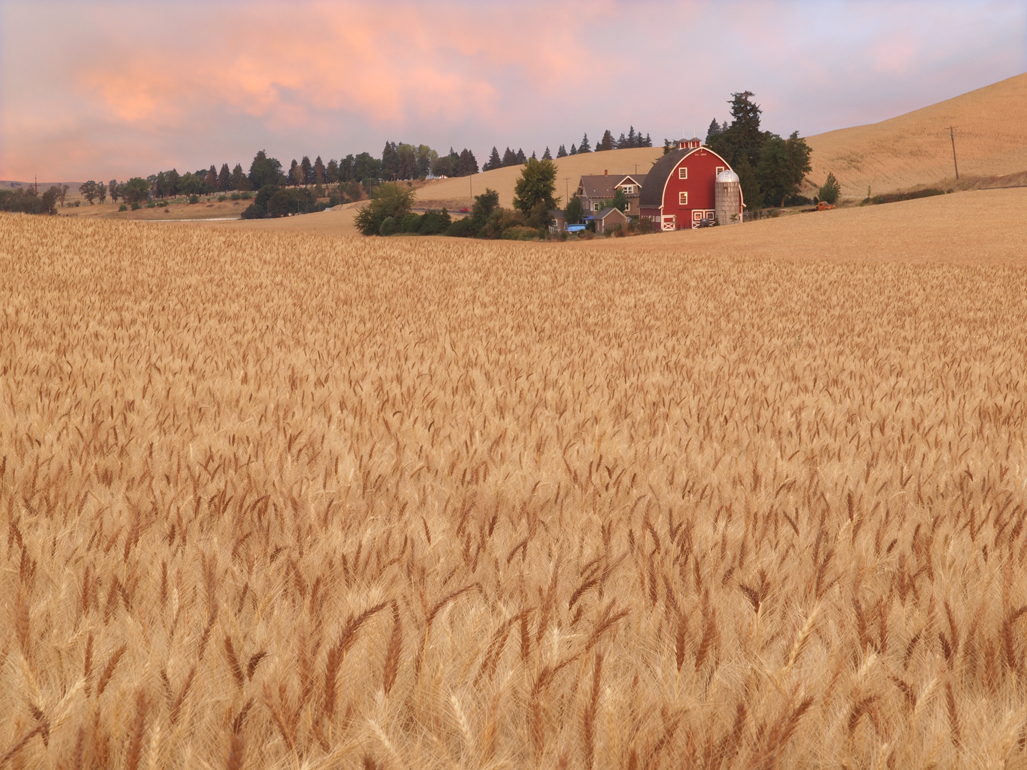


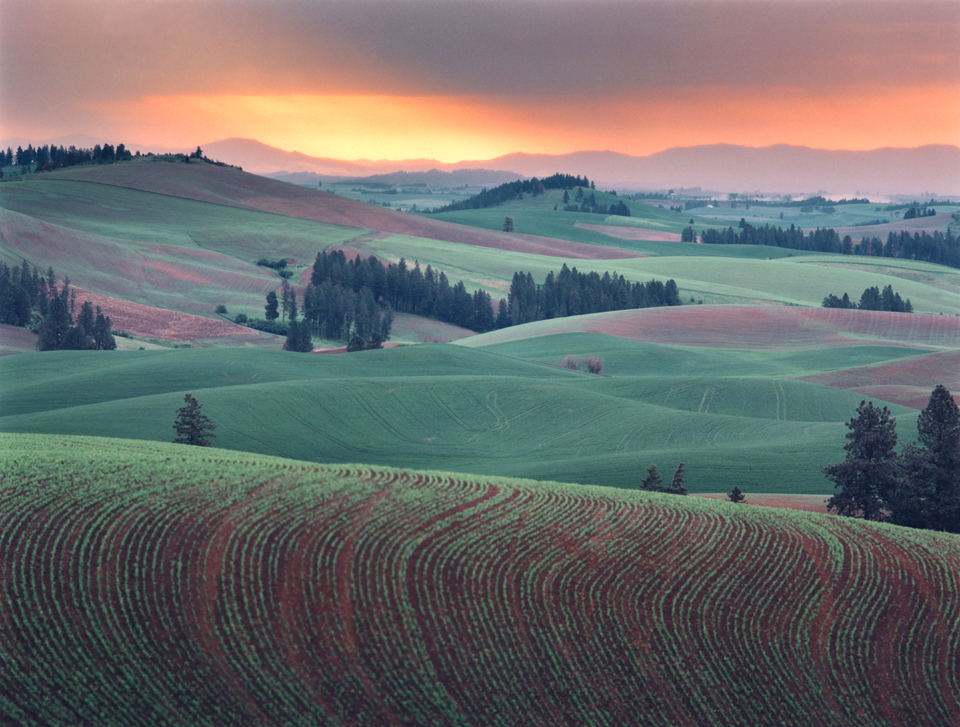
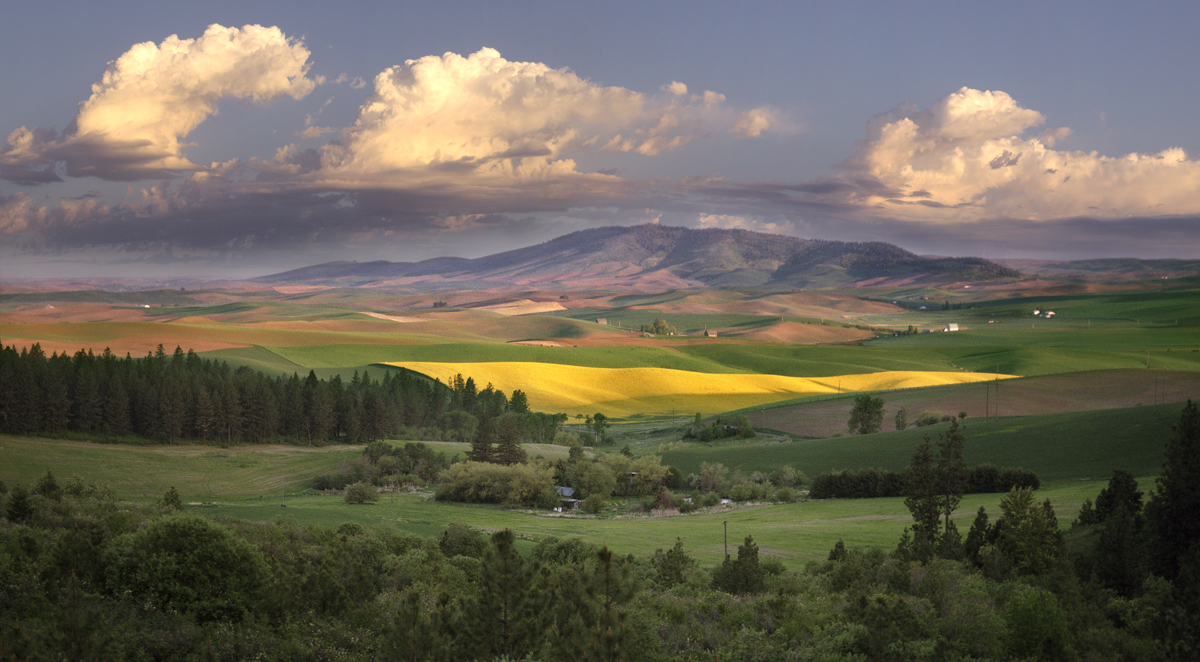
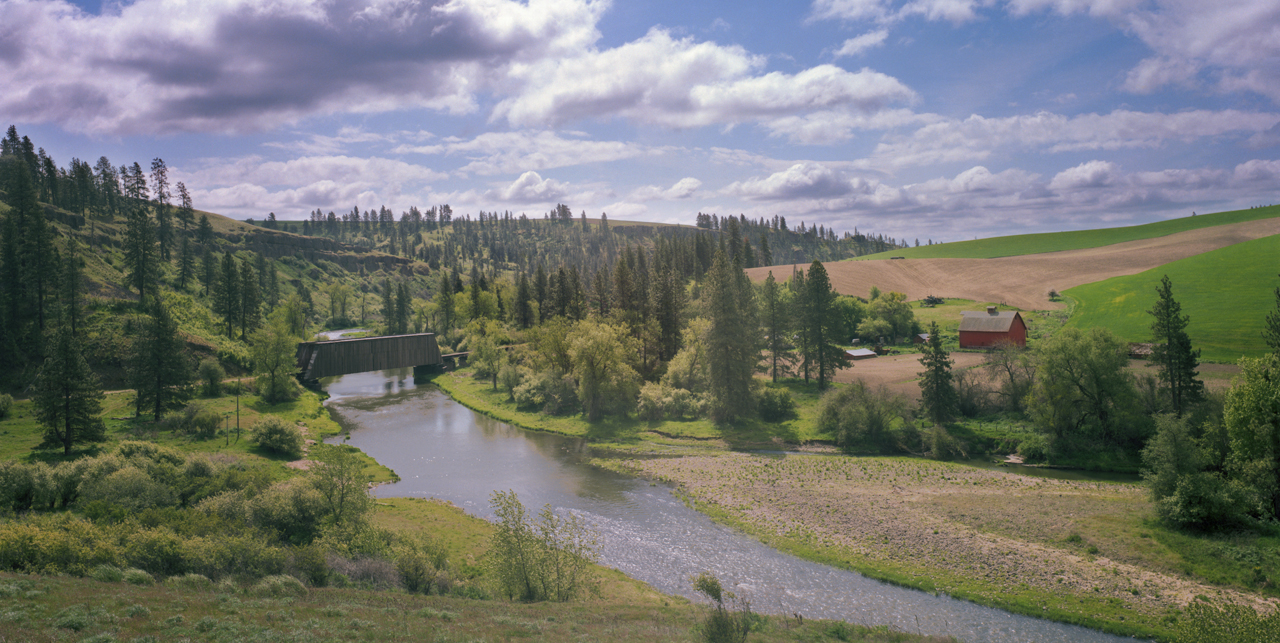
Our Story - The Full Version
The Fort Nisqually Granary
Ancestors Harvesting in the Early Years of Palouse Colony Farm
The story of Palouse Heritage began in 2011, when our co-founder, Richard Scheuerman, visited the Ft. Nisqually Living History Museum near Tacoma, Washington in preparation for a class he was teaching as a professor at Seattle Pacific University. There he stumbled upon the fort’s granary and old journals that revealed the role of frontier agriculture in the Pacific Northwest. This sparked a quest amongst him and his brother, Don, to identify the region’s earliest crop varieties, study their nutritional benefits, and revive production of these heritage grains. With support from the WSU/Mt. Vernon Research Center and Bread Lab, Palouse Heritage was founded in 2014 to promote health and heritage through the cultivation of nutritious, flavorful grains such as “Hudson’s Bay” White Lammas wheat, Turkey Red wheat, and Scots Bere barley.
Today’s Palouse Colony Farm Heritage Grain Fields
Some roots of this work stretch back even further. Our Scheuerman family traces its origins to the Vogelsberg (“Bird Hills”) district of Schotten in central Hesse, Germany, where our ancestors farmed for untold generations. Political strife in the 1760s led them to immigrate eastward to Russia at the invitation of Tsarina Catherine the Great. After transforming the vast steppe into one of the world’s most productive farming regions, they faced turmoil again in the 1870s and immigrated to America. Among the first to leave were the Litzenberger, Ochs (Oakes), and Scheuerman families. They lived briefly in Kansas before relocating to the Pacific Northwest. In October 1883, they arrived in the Palouse Hills and established the historic Palouse Colony on the Palouse River between Endicott and St. John, Washington.
The Palouse Colony grew quickly into a thriving settlement that welcomed new arrivals from the Old Country. Families described it as a “Land of Milk and Honey,” with children tending dairy herds and harvesting honey from wild hives along the river. Colonists practiced medieval-style farming methods, including long, narrow Langstreifen fields (akin to English furlongs), three-crop rotations (Dreifelderwirtschaft), and shared “commons” (Almenden) for grazing and gardens. Harvests were gathered by hand with sickle and scythe. Many thousands of people in the Northwest today can trace their origins to this place of sanctuary and renewal.
Richard, Don, and other family members reestablished Palouse Colony Farm on its historic site as part of Palouse Heritage’s endeavors. The farm once again now raises heritage grains using regenerative Old World methods adapted for today’s needs. These practices include responsible crop rotations, natural soil amendments, and approaches that restore vitality, prevent erosion, and dramatically reduce harmful carbon emissions. The farm is non-GMO, free of glyphosate and other harmful chemicals, and Salmon-Safe Certified. Every bag of grain we provide represents not only wholesome food but also the revival of a farming tradition that values the health of the soil, the strength of community, and heritage.
"Creating sustainable grain economies seeks to respectfully feed body, mind, and spirit. There have been thousands of wheat varieties and thousands of barleys since time immemorial. Experiencing their distinct flavors, knowing their history, and using them in old as well as new recipes can all be inspiring acts. By learning more about grains we can make foods that are healthy and taste wonderful. This is not some fashionable culinary trend, but a longstanding matter of common sense. The challenge of our day isn’t to tear down big companies or criticize dietary habits, but to transform them by promoting appreciation for these values. It starts with farmers, bakers, and brewers who are in the best position to lead the change."
—Chris Bianco, “A Link in the Chain”, The Washington State University - Mt. Vernon Grain Gathering 2016, Mt. Vernon, Washington
